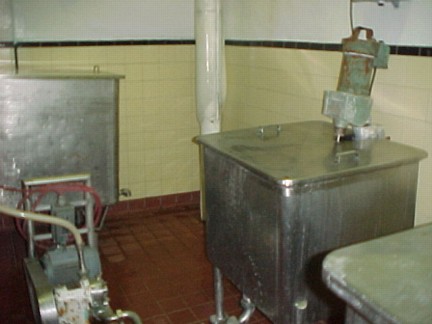Many people harbour the mistaken idea that yeast was specifically designed for the creation of beer. This is far from being the truth, for yeasts are among the most common organisms known to mankind. They are widely disseminated in nature, being present in soil, water, air and are found on practically everything we wear, see, or touch. They are single cell, microscopic plants, classified under the broad group "Eumycetes" which includes mould and fungi. There are hundreds of species known to mankind; however, of these species, only a few are of any value to the brewer. All yeasts are included under the genus "Saccharomyces", but there are many sub-species. The brewer is only concerned with a very few varieties of the species "Saccharomyces cereviseae".
The valuable yeasts are divided into lager and ale yeasts. Lager yeast cells are oval in shape and are bottom fermenters; as fermentation progresses, they settle out into the bottom of the fermenting tank, the yeast being removed after the beer is withdrawn from the tank. Ale yeast cells are circular and top fermenters; that is, the yeast rises to the surface during fermentation, and is skimmed off for later use.
Each yeast cell is a separate entity, capable of carrying out all the life functions peculiar to higher forms. It uses food: this microscopic single celled living unit is capable of utilising nutrient materials, replenishing its own protoplasmic content and synthesising new compounds, as complicated as nucleo-proteins and vitamins. The cell wall is about 20% of the dry weight of the cell and is mainly carbohydrate in nature, consisting of hemicelluloses, highly polymerised glycogen and phosphates and is semi-permeable. This cell wall prevents passage of colloidal material but permits diffusion of simple molecular nutrient materials and excretion of the waste products, alcohol and carbon dioxide, as well as nitrogenous substances and other byproducts. All changes are initiated by enzyme complexes, the chief one being zymase. Microscopic examination reveals little to explain the complex changes initiated by yeast. The cytoplasm of a young vigorous cell appears dense, smooth and clear. Within it, we observe a vacuole containing refractive particles and glycogen. The nucleus is barely discernible, located near the vacuole.
The yeast cell also breathes as much as it utilises oxygen and produces carbon dioxide. In addition, it reproduces by budding. During budding, a bulge forms on the side of the cell, the nucleus divides, one part passing to the daughter cell being formed. The daughter cell will separate from the mother cell and will in turn produce new cells.
During fermentation, the yeast growth is tremendous, reproducing as much as seven to eight times its own weight. The usual procedure is to save a considerable quantity of yeast, which is removed from the bottom of the fermenter after the beer has been pumped (known as "racking") to primary storage. Therefore, the brewer has an abundant supply of yeast to select from for pitching into subsequent brews.
All yeast being saved for pitching is subjected to rigid microscopic examination for bacterial contamination. A standard of less than two bacteria per 1,000 yeast cells is the recommended limit for pitching yeast.
Pitching yeast is subject to an acid wash. The addition of acid lowers the pH to a point which destroys bacteria without damaging the yeast cell. Sediments are checked for bacterial contamination as well as competent and complete bacteriological surveys including air samples, liquid samples and surface swabs.
During fermentation, the pH becomes progressively more acidic resulting from the further protein simplification to amino acids. As the fermentation continues, there is a marked temperature increase.
Temperature control is the main method of fermentation control. Each fermenter is fitted with either a stainless steel attemporating coil or jacket through which refrigerated glycol can be pumped and in this way, the temperature of the fermenting wort can be controlled. By closely controlling the temperature of the brew, with close specific gravity observation, making both a function of time, we endeavour to make one brew exactly like the predecessor. In this way we produce a uniform product, biologically sound and of high quality.
Lager and ale fermentations differ considerably. Each type of fermentation is carried out in a separate fermenting room, as every precaution is taken to keep the two varieties of yeast separate. Lager fermentations are done at lower temperatures over a longer period of time, generally a spread from 10-15°C (50-60°F) for up to eight days. Ale fermentations are conducted at a higher temperatures over a shorter period of time than lager fermentations, a spread from 15-21°C (60-70°F) for seven days producing the best ales.
Besides the fermenting differences, there are additional differences in the brewing method and in the method of hopping. Generally, ales are more heavily hopped than lagers, but the greatest single difference between them is the different type of fermentation caused by the two different yeast varieties of the species "Saccharomyces cereviseae".

Above: Yeast Room
Below: Yeast Tub
